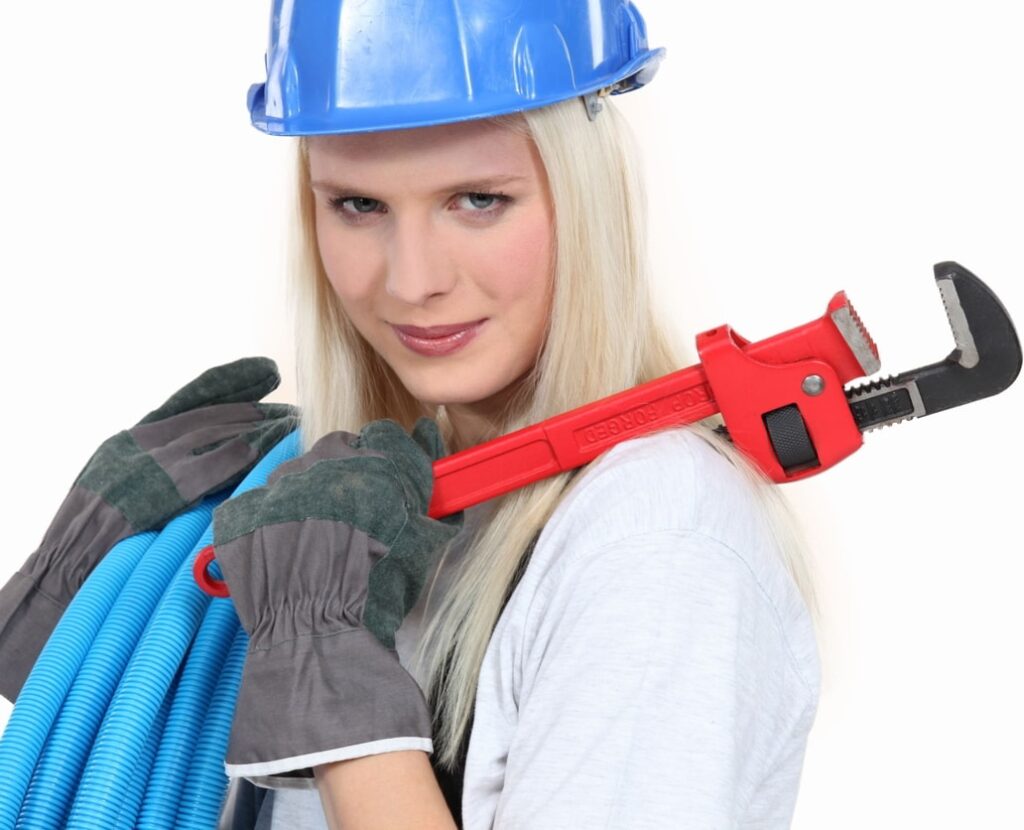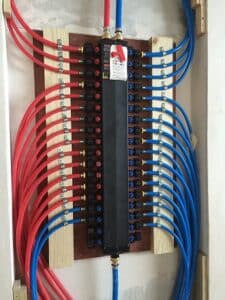Plumbing 101 Tutorial: PEX vs Copper
This month, Mike puts on his teacher’s hat and explains some of the technology and use of different plumbing products.
Once upon a time, homes were built using brass, iron, lead, and copper for water, waste, steam or hot water heat, and washing/drying clothes. As recently as the 1980 and early 90s homes often used copper to get fresh water and wastewater to and from a home. Not so much anymore. Today, new homes primarily use PVC (polyvinyl chloride) and PEX (cross-linked polyethylene). Read on and learn about PEX and why it has replaced copper in most new homes and often can be integrated into existing homes.

The Origin of Pex
1620 (that is not a typo) Wirsbo Company was founded in Virsbo, Sweden.
1968 German inventor, Dr. Thomas Engel, develops a method to chemically crosslink polyethylene.
1972 Wirsbo introduces Engel-method PEX to the European market.
1984 Wirsbo opens its North American operations in Rockford, Ill., and introduces Engel-method PEX for radiant floor heating.
1988 Wirsbo moves to Lakeville, Minn., and is acquired by Uponor, a multinational plastic pipe manufacturing conglomerate operating in 40 factories around the world.
1990 North American headquarters opens in Apple Valley with corporate offices, a manufacturing facility and a training center.
1992 Wirsbo of Canada in Regina, Saskatchewan becomes a wholly owned subsidiary of Wirsbo North America
1992 The company launches ProPEX® ASTM F1960 expansion fittings into the market.
1993 AquaPEX® plumbing systems become available, offering an alternative to copper, CPVC, and other plumbing piping products.
1995 The company launches its first line of engineered polymer (EP) fittings.
2000 AquaSAFE™ Fire Safety Systems provide the first PEX multipurpose plumbing and fire sprinkler system.
2001 Company name changes to Uponor Wirsbo to capitalize on the brand awareness of both companies.
2006 Uponor Wirsbo and Wirsbo of Canada officially become Uponor North America.
2008 Canadian Sales and Marketing offices open in Mississauga, Ontario.
2009 New distribution centers open in Lakeville, Minn. and Calgary, Alberta.
2009 Uponor becomes the first to offer a complete lead-free plumbing solution from the inlet to the faucet.
Yes, the company was founded centuries ago, but the means to create PEX was actually finalized in 1972. At the time it was announced as a generally available product for plumbing and home builders, it was meant as a delivery system for radiant heat, eliminating the need for a glycol (alcohol-based) supply.
What happened to Copper Tubing?
Nothing. Except that as the homebuilding industry caught fire, demand for copper soared. As incomes grew in poorer countries, where US businesses had outsourced manufacturing and telephone support, additional demand for copper put even greater stress on supply. And as you may remember from Economics 101, when demand outstrips supply, prices go up.
There is one other consideration – Skilled labor. From the early 1980s, fewer and fewer high school-age students were entering trades such as plumbing and electrical. That meant that the costs of having skilled labor also rose since soldering or “sweating” copper pipe to eliminate any leaks became expertise primarily handed down from father to son. With the housing boom years beginning in 1980, the younger generations did not want to get involved in the manual labor associated with the trades and instead looked for careers in finance, technology, and sales.
Advantages and Disadvantages of Copper
Advantages of Copper
- Durable and flexible, making it easy to install
- Safer in natural disasters
- Weather and bacteria-resistant
- Resists corrosion, more so than other metals
- Unaffected by ultraviolet rays, so it can be used outside
- Resists burning and does not release toxic gases in a fire
- Is recyclable, making it a more sound environmental choice
Disadvantages of Copper Piping
- Can corrode
- Has become expensive
- With higher levels of copper from corrosion, water can have a metallic taste
Copper can freeze and break in cold water
What are the Advantages and Disadvantages of PEX?
Advantages of PEX
- Lower cost than copper equivalent run
- Adaptable and easy-to-use
- Color-coded (Red pex for hot, Blue pex for cold)
- Is burst-resistant due to its flexibility to expand and contract with ambient temperatures
- Works with both hot and cold water supplies
- Offers integration with existing metal and PVC piping
- Easier and faster to install and with less of a chance to leak, due to fewer fittings
- Shutoff valve at each supply line
- Can have a pressure balanced system
- Can bend around most corners without the need for any couplings or additional fittings
Disadvantages of PEX
- Can not be used outside, and can be damaged simply being stored outside for a lengthy period of time
- Can not be recycled, due to its shorter lifespan
- Provides an impermeable membrane that may allow the possibility of water contamination
- Requires an expensive crimping tool to accept fittings.
New Homes are built with PEX distribution centers
Today, many new homes are built with a pex distribution center as pictured below. Much like an electrical panel, it represents where both hot and cold supplies are being delivered. This makes servicing an outlet, fixture, or faucet much easier since the panel should remove any doubt about where the line, whether it’s hot or cold, is going to end up.

We hope you found this brief tutorial on the difference between pex and copper valuable. You should also know that you can trust Muccia Plumbing, Heating & AC to install the RIGHT product in the RIGHT environment. Do not leave those kinds of choices to a handyman who tries to know a little about a lot of different subjects. And if you are buying or selling a home in Bergen County, there is no reason to rely on the knowledge of one home inspector. Instead, let Muccia Plumbing, Heating & AC inspect the key areas of the home you are buying or selling. We’ll let you know how much life is left of your water heater, any issues that might fail a town inspector for ventilation, and ensure that your heating and cooling are running at peak performance to keep your costs low and help the environment by being as “green” as possible. We do this every day and have been for 40 years. Please call us to schedule your inspection BEFORE buying or selling, or just to give you peace of mind. We operate 24X7X365 and you can reach us at 201-343-1414 or info@mucciaplumbing.com

